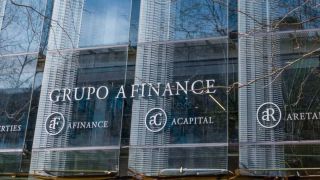
What will happen with housing in 2017: more new construction and more expensive mortgages
The year could not end better for millions of mortgaged. European law forces some financial institutions to pay back everything overcharged for the floor clauses, at least 4,000 million euros.
The new houses will cut distance to the used ones and will be 30% of the offer and the prices will not increase more than 3%
The year could not end better for millions of mortgaged. European law forces some financial institutions to pay back everything overcharged for the floor clauses, at least 4,000 million euros. A holiday gift that, in return, will affect one way or another in the pocket of those who sign a new mortgage in 2017.
Experts assume that the affected entities will make these loans more expensive. In addition, "it is probable that from now on will be charged for the provision of services for which up until now was not charged, and that the amount of commissions increase," says José María López, a lawyer specializing in financial regulation.
The eurobond could surpass the 0% barrier during the second half of 2017, according to Bankinter (now stands at -0.074%), which would make the monthly fees somewhat more expensive. And, also, it is expected for July its update to the euríbor plus, which could increase its quotation.
But it does not appear that any of these new circumstances will shake the foundations of a market that in 2016 has strengthened its reactivation: the exercise will end in the environment of the 445,000 homes sold, a 26% increase over 2015, according to College of Registrars. In addition, the stock of new construction has been reduced almost 20%, to 388,000 houses.
It has not gone bad in a sector where "visas grow at a rate of almost 40% and prices are stabilizing in almost the entire country after falling 45% from the highs of the crisis." And the average profitability of housing has climbed to 6.11%.
Gone are eight years of adjustments. But also behind the fear is left to new bubbles. The rise in prices differs according to the source consulted, but no increase is expected higher than 3% on average. "The recovery will be slow in a long and smooth expansive cycle. Price growth will be 2% and the construction sector will not in the short term be one of the engines of Spanish economic growth," according to the Spanish Association of Analysis Of Value (AEV). Two out of three experts consulted by the association agree that other markets, such as services or export markets, will experience the most significant growth.
Like economy and employment, brick will grow at a more moderate pace.
The unequal behavior of prices and purchases will continue. Although the improvement will extend over more cities, the dynamism of Barcelona, Madrid, Costa del Sol, Alicante and the islands contrasts sharply with what happens in areas of interior and some coasts with high levels of stock and price falls .
More than 500,000 homes will change hands next year, experts say. The forecast for Tinsa is the increase in the purchase of new and used homes between 10% and 15%, between 520,000 and 545,000 units.
For its part, the mortgage market continues to show favorable conditions for household indebtedness and the housing mortgages accumulated by families are now 20% below the 2010 high, according to BBVA. In 2017 will be signed between 425,000 and 450,000 new loans, between 5% and 10% more than in 2016, predicts Jorge Ripoll.
In the field of financing, fixed mortgages continue to mark a trend, showing a conservative buyer profile that runs away from risk. Today, one-third of new mortgage loans are at fixed rates. It remains to be seen if these products continue to gain market share in 2017.
Facing the new exercise will be important milestones. One is that the new housing will finally appear in the official statistics and will cut distances with respect to the one used. At present, only 10% is new product and only 11 units per 1,000 inhabitants are available. In the next three years, the new work will gain ground to become 30% of the offer, compared to 70% of the second hand. It is estimated that the construction of new construction will increase to cover a demand of about 150,000 homes year and that the activity will be centered in Madrid, Malaga, Barcelona, Basque Country and Baleares.
The rental market will continue to be a major player next year, protagonist in the cities of Madrid and Barcelona, with more than 40,000 annual contracts in each one. Far below are Baleares, Alicante, Malaga, Valencia or Seville, where 3,000 to 7,000 rental contracts are signed each year. Rents are rising in much of the country (around 4%) due to the growth of demand and the rigidity of supply. Therefore, the sector calls for the entry of operators who provide professionalism and contribute to the increase in the supply of rentals, as already happens in countries such as Germany.
The next exercise will also be the maturation of the servicers sector, the companies born of the former banking real estate subsidiaries.
- Featured news
-
Consigue tu hipoteca ideal con ayuda experta y mejores condicionesAugust 11th 2025
-
 Incorporamos a Carlos Martín como nuevo Director de nuestra oficina de Barcelona en aFinanceSeptember 19th 2024
Incorporamos a Carlos Martín como nuevo Director de nuestra oficina de Barcelona en aFinanceSeptember 19th 2024 -
 Las finanzas bajo el foco con nuestro Director NacionalSeptember 12th 2024
Las finanzas bajo el foco con nuestro Director NacionalSeptember 12th 2024 -
 En aFinance participamos en el Evento ‘Comunicación Eficaz’ en Roca Barcelona GalleryMay 25th 2024
En aFinance participamos en el Evento ‘Comunicación Eficaz’ en Roca Barcelona GalleryMay 25th 2024 -
 En aFinance, nos complace anunciar la incorporación de Patricia Marqués como Coach EjecutivaMay 23rd 2024
En aFinance, nos complace anunciar la incorporación de Patricia Marqués como Coach EjecutivaMay 23rd 2024 -
 En aFinance hemos superado los 1.150 millones de euros en valor de transacciones durante 2023May 3rd 2024
En aFinance hemos superado los 1.150 millones de euros en valor de transacciones durante 2023May 3rd 2024






